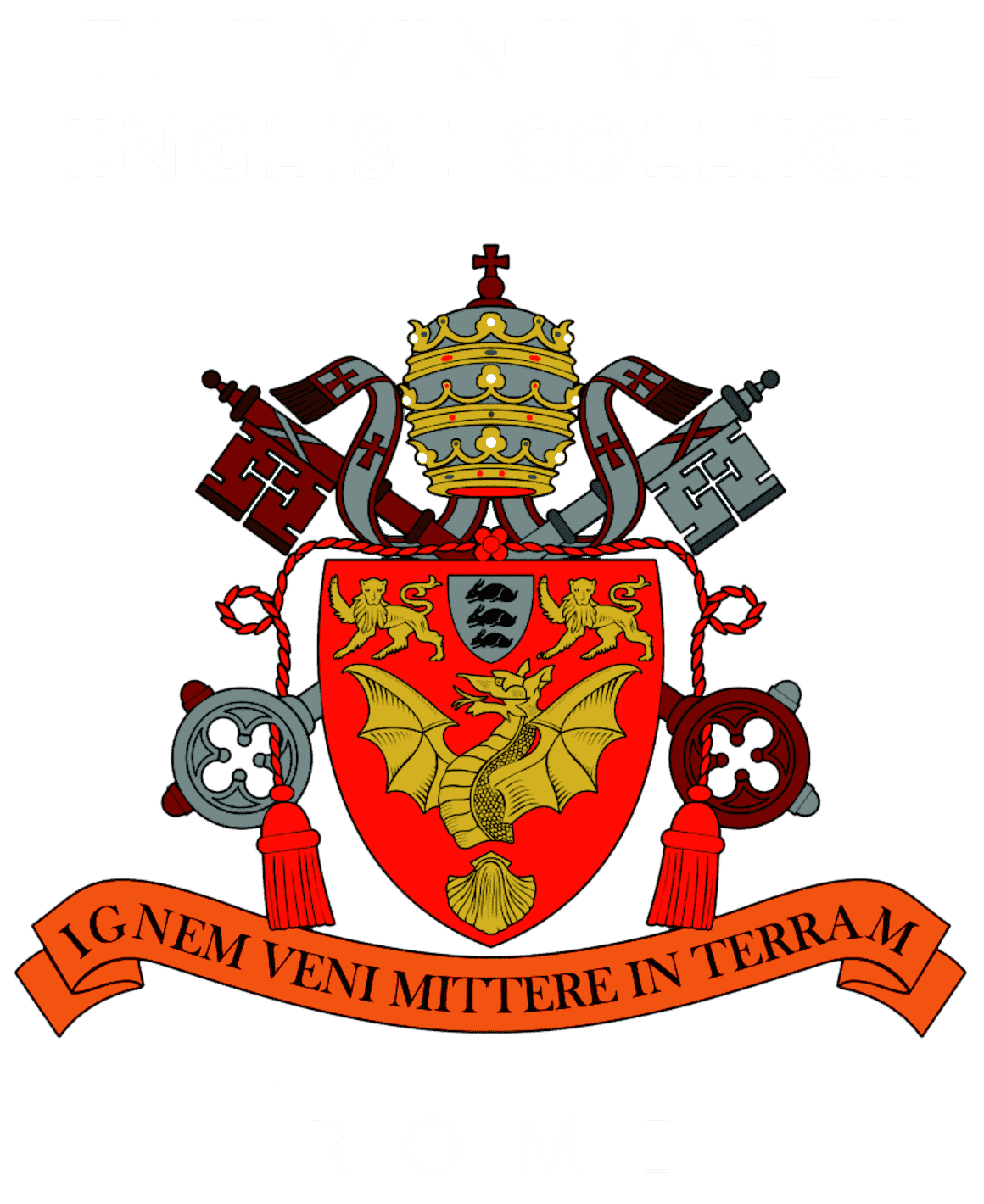St John Henry Newman
Seeing John Henry Newman raised to the altars as a saint was a wonderful experience for all of us at the VEC. Visitors flocked here from all over the world. We were honoured that six of our seminarians were invited to serve at the Mass, and they met the Holy Father personally before Mass began. One of our deacons proclaimed the Gospel - a once-in-a-lifetime experience.
Deacon Peter Wygnanski proclaims the Gospel at the canonisation Mass
In the course of the weekend there were concerts, conferences, prayer vigils and cultural events, enough to keep all the pilgrims occupied.
Many of the visitors took the opportunity to visit the English College, where we hosted a small exhibition on the new saint’s four visits to Rome. He came first as a young Anglican in 1833 and loved what he saw, but still had his hesitations about “Roman excess”. Thirteen years later he came seeking ordination in the Catholic Church. He studied at the Collegio Urbano, the missionary college run by the Congregation Propaganda Fide. He was ordained in the church there, but visited the English College frequently during that time. The third visit was as Provost of the Birmingham Oratory, seeking to resolve a dispute. His fourth visit was when Pope Leo XIII made him a Cardinal. Between them, these four visits map out the whole of Newman’s life journey.
The most famous visitor we had to the exhibition was His Royal Highness the Prince of Wales, whose signature graces a whole page of our Visitors’ Book. We were honoured that he chose to be present for the canonisation. Immediately after the Mass, he was driven to the English College for a rest and a cup of tea – and an opportunity to view the exhibition, before travelling on to the official reception in the Collegio Urbano.
His Royal Highness Prince Charles signs the visitors’ book (deciding against using the Vice-Rector’s fountain pen)
An article by Prince Charles appeared in L’Osservatore Romano and the London Times on the day of the canonisation, in which he offers great insight into St John Henry’s significance for the people of today. The official UK delegation included one or two government ministers, who had to hurry back to London afterwards to be present for the Queen’s Speech in Parliament the following day.
The Prince of Wales showed an active interest in the new saint
On the afternoon of the canonisation, the British Embassy to the Holy See organised a “cultural walk”, taking in four different locations associated with the new saint. The first was the offices of the Congregation Propaganda Fide near the Spanish Steps, where our new saint was ordained to the priesthood. An English actor, Michael Wade, read some extracts from Newman’s famous “Letter to the Duke of Norfolk”.
The next stop was at the Palazzo Maffei, where in 1879 Newman received the official notification (biglietto) that he was to become a Cardinal. At the time this was the residence of the Cardinal Protector of the English College, Cardinal Edward Howard, a close relative of the Duke of Norfolk. Cardinal Howard hosted that important occasion, in which Newman delivered his famous “biglietto speech”, warning of the dangers of “liberalism in religion”. Extracts from this were read to the canonisation pilgrims by actor Michael Wade.
The third stop was the English College itself. By this time, the walkers were getting tired and hot, so they were glad to be offered drinks of cold water. They made their way into our beautiful College Church, where Michael Wade read an extract from Newman’s great poem “The Dream of Gerontius”. This was to be set to music, after Newman’s death, by another great English Catholic, Sir Edward Elgar.
The final stop was the church of San Giorgio in Velabro, Newman’s titular church. After a welcome from Cardinal Gianfranco Ravasi, the current titular, the walkers were treated to a fine concert of music performed by Cappella Fede under the direction of Peter Leech. This included a moving setting of Newman’s famous hymn “Lead, kindly light”, composed for the occasion by Peter Leech and dedicated to the British Ambassador to the Holy See, Her Excellency Mrs Sally Axworthy.



